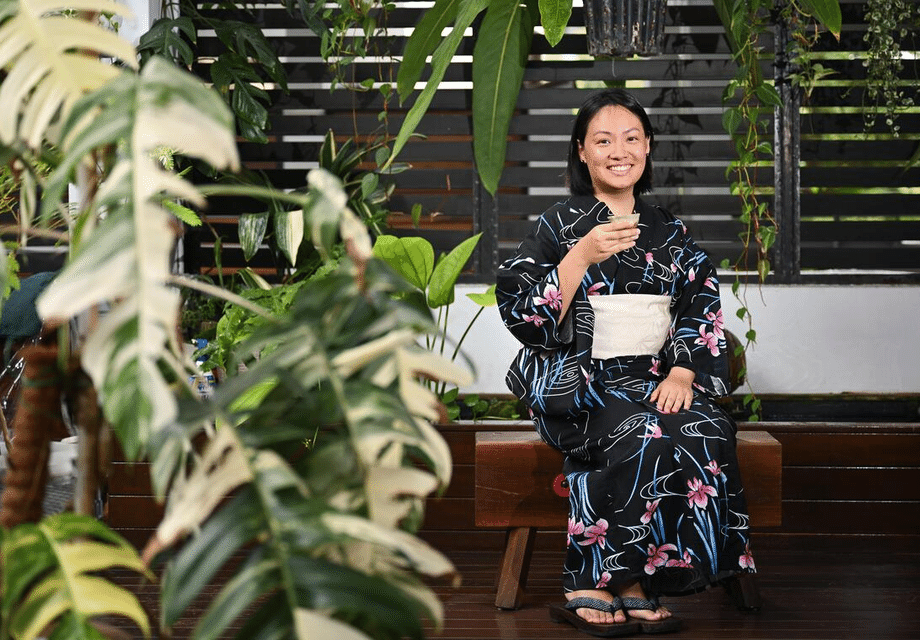A Singapore Pastry Pioneer Finds a New Calling
When Flor Patisserie shut its doors in July 2025 after a steep rental hike, founder Heidi Tan did not pause for long. She had already begun guiding small group culinary and culture trips to Japan, a passion that grew from years of collaboration with Japanese pastry chefs and suppliers. That sideline, started in 2023, has now become her main occupation under a new company, Kitabi Travel, launched in August 2025. Her next tour in October is already full.
- A Singapore Pastry Pioneer Finds a New Calling
- Why Flor Patisserie Closed
- From Customers to Travelers The Birth of Kitabi Travel
- What Makes These Japan Tours Different
- Inside a Five Day Itinerary
- The Economics Behind the Shift
- Risks and Challenges for Boutique Travel Operators
- From Pastry Case to Field and Kiln A Career Arc
- Why Culinary Travel Appeals Right Now
- Context From Singapore’s Independent F and B Scene
- Tips for Travelers Considering a Culinary Tour
- At a Glance
Tan spent 15 years building a loyal community around Japanese inspired French cakes, then decided to apply the same eye for detail to travel. Instead of crafting strawberry shortcakes and citrus tarts, she now curates visits to kilns, farms, markets and dining rooms across Japan. Her tours spotlight regional foodways and artisans who shape them, from the first spring of water used to brew a spirit to the clay body that forms a tea bowl.
It is a very different life from running a patisserie. There are no daily production schedules or shop shifts. The similarities sit in her approach. She emphasizes small groups, premium ingredients, and the feeling of being welcomed as a regular rather than a tourist. It is a move that many in the independent food trade will recognize, a shift from heavy fixed costs to an experience based business that rewards storytelling, authenticity and trust built over years.
Why Flor Patisserie Closed
Flor Patisserie opened in 2010 on Duxton Hill, drew fans for Japanese style French pastries, and expanded to five outlets at its peak with monthly revenue of 180,000 dollars. Rising costs and a legal dispute with a business partner brought consolidation, then the pandemic squeezed sales and manpower. By 2025, the last shop in Siglap faced a rent increase from 5,400 dollars to 8,500 dollars a month. That was a near 57 percent jump, which tipped the equation against staying open.
Across the sector, independent food businesses have wrestled with higher ingredient prices, staff shortages and landlords seeking market level rents. In that context, a single shop can become a financial trap if revenue dips even slightly. Tan also weighed the strain of recruiting and retaining bakers and service staff. The decision to close was painful, but she felt fortunate to exit without loans.
She held on to what made Flor special, a standard of quality and a deep respect for craft. Those values now guide her work in travel. The difference is the cost structure. A kitchen requires lease commitments, utilities and a full payroll. A small tour operator carries more flexible expenses, with costs tied to each trip and the freedom to adjust routes, partners and dates.
From Customers to Travelers The Birth of Kitabi Travel
The earliest groups Tan led were filled with her own customers. They were curious about the Japanese roots of Flor’s recipes and the chefs she collaborated with. Six years of exchanges with pastry makers in Japan had opened doors and introduced her to regional producers and restaurateurs. Turning those relationships into an itinerary felt natural after two years of part time guiding.
In August 2025 she formalized the project as Kitabi Travel. The first official departures are compact five day trips that focus on a single region. Her October journey sold out, a signal that demand exists for small group culinary travel that goes past standard tourist highlights. Rather than packing in famous sights, Tan tries to build a storyline for each route, with seasonal ingredients and craft traditions linked together in a way that feels coherent.
Her groups are small enough to sit around a chef’s counter, visit a family farm without overwhelming it, or step into a pottery workshop while the kiln is still warm. That scale shapes the experience. Guests get to talk with artisans, learn the difference between a commodity product and something shaped by hand, and taste seasonal foods at their source.
What Makes These Japan Tours Different
Japan has no shortage of tours, yet many travelers want more context, fewer crowds and genuine access. Tan’s concept builds on her training as a French schooled pastry chef who worked closely with Japanese mentors. She knows what it takes to produce a cheesecake with a precise crumb or a perfect sablé. That knowledge carries over when she introduces a washi papermaker, a Tamba potter or a beef producer. She spots the techniques that matter and explains them in plain language.
Seasonal ingredients and rare flavors
Autumn trips chase the short window for matsutake mushrooms, prized for their aroma and harvested in limited quantities. In peak weeks, guests might sample matsutake in a simple suimono broth, grilled with a squeeze of sudachi, or nestled into rice. The tours often feature Tamba beef, a regional wagyu brand linked to Tajima lineage cattle raised in the Tamba Sasayama area of Hyogo Prefecture. That beef is known for balanced marbling and a clean finish. Tasting it alongside local vegetables and rice shows how regional cuisine fits together as a whole.
Craft traditions off the main tourist trail
Beyond food, Tan’s itineraries highlight the crafts that support daily life. The Tamba region, for example, is home to Tamba Tachikui ware, counted among the Six Ancient Kilns of Japan. The pottery is functional, earthy and deeply tied to local clay and wood firing traditions. A workshop visit shows how clay is wedged, thrown and trimmed, then fired to produce a surface that holds heat well. Guests who are used to buying tableware off a shelf often find it surprising to watch a cup take shape in front of them.
Face time with artisans
Tan arranges meetings with people who rarely appear on standard routes. That might be a family running a wagyu farm focused on cattle lineage, a kaiseki chef who sources directly from mountain foragers, or a shochu maker who ages spirit in cool underground rooms to control temperature. These visits are intimate, which is why group sizes stay small. The goal is not to check items off a list, but to understand why a dish or craft looks and tastes the way it does.
Inside a Five Day Itinerary
No two trips are identical, since seasons and harvests change. A typical five day outline shows the balance of eating, learning and exploring that Tan aims for. Activities shift slightly based on artisan schedules and weather, yet the cadence stays steady, with time to absorb each visit rather than racing between stops.
Sample schedule
- Day 1: Arrival in the region, welcome dinner built around local produce, orientation to the area’s history and geography.
- Day 2: Morning market walk with tastings, visit to a pottery workshop to see throwing and trimming, lunch at a family run restaurant, afternoon break, evening kaiseki focused on seasonal ingredients.
- Day 3: Farm visit to learn about wagyu rearing or a tea field walk to observe harvesting and processing, tasting session guided by the producer, casual dinner with regional specialties.
- Day 4: Hands on craft experience such as washi paper making or miso blending, followed by a visit to a small brewery or distillery to understand fermentation and aging, dinner highlighting matsutake during autumn weeks.
- Day 5: Final tasting stop, free time for local shopping, departure.
Logistics are handled quietly in the background. Transfers are prearranged, restaurants are briefed on dietary needs in advance, and guests get practical notes on customs and basic phrases. That way the group spends more time engaging with hosts and less time worrying about details.
The Economics Behind the Shift
Independent patisseries face high fixed costs. Rent is due every month, utility bills rise with each degree on the ovens, and payroll must be covered even on slow days. Many boutique shops use premium dairy, fruit and imported chocolate, which adds vulnerability when currencies swing or freight disrupts supply. If rent jumps by half, the only options are to raise prices, shrink portions, cut staff or exit the lease. None of those moves feel good when quality is the brand.
Small group travel works differently. Most costs, from accommodations to transport, are variable and tied to each departure. If a tour fills, the operator earns a margin after paying suppliers. If demand weakens, dates can be postponed. There are fresh risks, like currency exposure, deposits and the need for liability insurance. Yet the operator can balance those with careful scheduling and clear terms. For someone who thrives on planning and relationships, the model offers more control over workload and cash flow.
Tan’s skill set translates well. Supplier vetting is second nature to anyone who ran a kitchen. She has a long memory for who delivers on promises, a sensitivity to seasonality, and a knack for shaping a menu like a narrative. A tour is a tasting menu in motion, each stop leading to the next with purpose. That framing helps guests connect the dots between a field, a workshop and a table.
Risks and Challenges for Boutique Travel Operators
Culinary travel depends on factors no operator can fully manage. Weather can disrupt harvests and transport. Festivals and local holidays can alter business hours. Regulations about farm access and alcohol tastings differ by prefecture. Currency swings affect supplier costs and traveler budgets. The best defense is planning and communication, with clear refund and postponement policies and a safety focused mindset.
Scale is another factor. Keeping groups small protects the intimacy of visits, yet it limits revenue per departure. That reality pushes operators to build strong pipelines of interested travelers, cultivate repeat guests and collaborate with like minded hosts. It also requires stamina, since guiding is demanding work that blends hosting, logistics and troubleshooting over many long days in a row.
Quality control matters. If one partner relaxes standards, the guest feels it. Regular visits, transparent feedback and backup options for each segment help preserve the experience. Operators who treat their network as a community, not a list of vendors, can build loyalty that carries them through tight moments.
From Pastry Case to Field and Kiln A Career Arc
Tan’s story starts with teenage curiosity and a willingness to do the hard jobs. She baked through school, studied at Le Cordon Bleu in Sydney after her A levels, and apprenticed under a Japanese pastry chef in Singapore. Work in a production kitchen taught her how to move fast, stay organized and keep standards steady even when tired. She often says everyone should try a service job at least once to build resilience and humility.
At 21, she opened Flor Patisserie with 250,000 dollars in seed investment from her mother, a businesswoman who supported her choice to pursue pastry. The shop broke even within a year. The flagship at Duxton earned a loyal audience, then more outlets followed. There were signature confections, including a light strawberry shortcake and a citrus tart made with orange, grapefruit and pomelo that became a fixture at celebrations for fifteen years.
When costs mounted, she tried to adapt. Some outlets with higher rents were closed during the pandemic period, and operations concentrated on the Siglap location. Once the latest rent jump arrived and staffing remained tight, she decided the best way to protect the values behind Flor was to carry them into a different kind of work. That choice opened up time she rarely had while running a kitchen. She now describes the feeling as a return to curiosity, a chance to learn again after years in the same daily routine.
Why Culinary Travel Appeals Right Now
Travelers are searching for substance. After years of restricted movement, many want trips that teach them something and connect them with people whose work they admire. Culinary travel ticks those boxes. Food offers a direct path into local culture, and small groups allow for real conversations with hosts. Japan suits this format because tradition and seasonality are deeply rooted in daily life. A mushroom, a piece of pottery or a cup of tea can open the door to history, geography and craft.
Small group trips also ease common worries. Navigating rural train lines, reserving a counter seat at a tiny restaurant or asking detailed questions about an ingredient can be hard without language skills or local contacts. A knowledgeable guide can remove barriers while keeping the spontaneity that makes travel memorable. That balance is delicate, which is why itineraries stay tight and groups stay small.
For hosts, curated tours bring guests who are prepared to listen, taste and respect constraints. A papermaker with a small studio cannot accept busloads. A farmer does not have time for long sessions with drop in visitors. When a group arrives with context and the right size, everyone benefits.
Context From Singapore’s Independent F and B Scene
Flor Patisserie’s closure sits within a wider wave of exits by independent cafes, bars and restaurants in Singapore. Operators cite a mix of pressures, including rent escalations, higher labor costs and consumer caution after the pandemic years. Many owners describe burnout and difficulty finding staff with both skill and staying power. Even beloved brands with devoted communities have struggled to translate affection into the revenue needed to handle rising fixed costs.
Industry veterans worry that a steady loss of homegrown names could make the dining landscape feel uniform, with chain concepts filling the space left behind. Independent businesses provide character and help nurture young talent. When they disappear, a city risks losing a slice of its identity along with the training grounds that produce the next generation of chefs and bartenders.
For entrepreneurs, the lesson is to keep options open. Some will double down on their core shops and push for growth. Others will move into classes, consulting, product lines or experiences like travel. The thread that connects successful pivots is the ability to carry brand values, relationships and customer trust into a format with more flexibility.
Tips for Travelers Considering a Culinary Tour
- Check the group size. Smaller groups mean more access and time with hosts.
- Read the seasonal focus. Autumn itineraries differ from spring routes. Ask what is truly in season during your dates.
- Ask about host relationships. Tours built on long term partnerships tend to offer better access and consistency.
- Review what is included. Confirm meals, transport, tastings and any hands on experiences.
- Share dietary needs early. Many small restaurants can adjust with notice, but not at the last minute.
- Budget for shopping. Crafts and pantry items can be hard to find at home. Leave space in your luggage.
- Plan for walking. Rural visits and market days involve steps and uneven ground.
- Carry respect. Learn basic greetings, arrive on time and follow host instructions, especially in production spaces.
At a Glance
- Flor Patisserie closed in July 2025 after a rent jump at its final Siglap shop from 5,400 dollars to 8,500 dollars a month.
- Founder Heidi Tan launched Kitabi Travel in August 2025 after two years of part time guiding.
- Her October five day tour is fully booked, with a focus on seasonal foods and regional crafts.
- Tours feature experiences such as matsutake tastings, Tamba beef, pottery workshops, washi paper making and visits to small producers.
- Tan applies Flor’s quality standards to travel, keeping groups small and relationships personal.
- The shift reflects a broader trend, as independent F and B operators seek models with more flexible costs.




